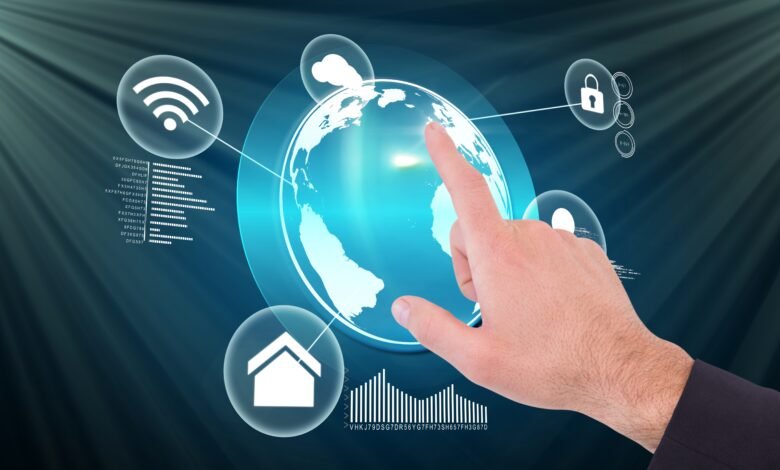185.63.253.300 Explained Meaning Invalid IP And Safety

185.63.253.300 is a group of four numbers that looks similar to an IP format, but it is not a working or recognized internet address. In clear and simple terms, it is not a valid IP. An IP address is like a digital home address that allows computers, phones, servers, and other devices to find and talk to each other across the internet. Every valid IP must follow certain rules. In this case, the last number is 300 which breaks the standard format. Because of this, it cannot be used for any real network or online communication.
Understanding why 185.63.253.300 is invalid means you need to know what IP addresses are, how they work, and why certain numbers are not allowed. Many people search for this number when they see it in server logs, error messages, security tools, or while fixing a network issue. The confusion happens because it looks like a real address but does not follow the rules. This article explains in simple language what an IP is, why this one is wrong, what it means when you see it, and what you should do about it. By the end, you will have a clear and full understanding even if you are not technical.
What An IP Address Means
An IP address stands for Internet Protocol address. It is a set of numbers that works as an identifier for a device or network. Just like a house has a unique street address so mail can reach it, every device on the internet has a unique IP so data goes to the right place. Without IPs the internet cannot work because computers would not know where to send information. Finding the right MS Office product key is essential to activate and use Microsoft Office versions with full features.
There are two main types of IPs used today. These are IPv4 and IPv6. IPv4 is the classic numbering system used from the beginning of the internet, and it follows strict limits for each number. It uses four numbers with dots between them, for example 192.168.1.10. IPv6 is newer and uses a longer format with both numbers and letters, for example 2001:0db8:85a3:0000:0000:8a2e:0370:7334. IPv6 was created because the world is running out of IPv4 addresses due to the huge number of devices now connected.
For businesses and students, the MS Office 2024 product key offers the latest tools, while the MS Office 2021 product key is widely used for productivity and collaboration. Older versions like the MS Office 2019 product key, Office 2016 product key, MS Office 2013 product key, and even the MS Office 2010 product key remain valuable for users with compatible systems. In this format, every single section of an address must stay between 0 and 255, and anything beyond that breaks the rules. This strict rule is part of how the internet works. This is why 185.63.253.300 cannot be valid. The last number is 300 which is outside the allowed range. This one error makes the whole address invalid.
Why 185.63.253.300 Cannot Be Used
If you look closely at 185.63.253.300, the first three numbers (185, 63 and 253) are fine. The last number, 300, is larger than 255. That breaks the rules of IPv4. To illustrate, an address such as 185.63.253.3 or 185.63.253.30 works fine because each part is inside the accepted range. However, 185.63.253.300 is rejected by every network because 300 is not an accepted number. Computers, routers, and servers will not connect to 185.63.253.300. If you try to open it in a browser or test it, it will not lead anywhere because it does not exist as a real address.
Each version requires a genuine product key to unlock Word, Excel, PowerPoint, and other applications. Similarly, operating systems also depend on licensingusing a valid Windows 11 product key or Windows 10 product key ensures smooth updates, enhanced security, and full functionality. The reason these rules exist is because the internet depends on correct identification. If addresses could use any random numbers, there would be no order and data could not be delivered. That is why these limits are strictly enforced by operating systems and network equipment.
Why You Might See 185.63.253.300
If you see 185.63.253.300 in a log file or in software, there are a few possible reasons. A very common reason is a simple typing mistake. Someone may have meant to type 185.63.253.30 or 185.63.253.3 but added an extra zero at the end. This often happens when numbers are entered by hand or copied incorrectly.
Another reason is an error in a program. Sometimes software creates a wrong IP because it processes data incorrectly. The wrong number then shows up in a report or log.
It is also possible that 185.63.253.300 appears because of fake or spoofed traffic. Bots and harmful tools sometimes use fake IPs to hide their real location. By using an address that does not exist, they confuse systems that collect statistics. These fake IPs cannot finish a real connection but can still show up in records. This activity is called IP spoofing. It is done to hide and avoid detection.
How To Check If An IP Is Real
If you are unsure about 185.63.253.300, there are simple ways to check. First, look at the four numbers. If every number is between 0 and 255, it is valid. If a single section goes above 255, the entire address becomes invalid and cannot be used online. This check takes just a few seconds.
Another way is to use an online IP tool. Websites such as ipinfo.io and whatismyipaddress.com allow you to type in an IP. These sites will show its location, its network provider, and other information. If you try 185.63.253.300, the tool will say it is not valid or will not give any details. This confirms there is no such address. For valid IPs, these tools are useful because they also tell you if the IP has a history of bad activity. There are also WHOIS tools that show which company owns a block of IP addresses. These do not work with invalid IPs because no one owns them.
Can 185.63.253.300 Harm Your System
The number 185.63.253.300 itself cannot harm your computer or network. Since it is invalid, there is no way any device can use it to connect to you. However, seeing it in logs can be a sign that a bot or automated tool is scanning your system. These scans cannot succeed because the address is not real, but they can still create extra entries in your logs. If too many of these invalid attempts are made, they may slow down a server because it has to reject each one. For this reason, it is a good idea to keep an eye on your logs and block repeated invalid requests.
Key Concepts Related To 185.63.253.300
When learning about 185.63.253.300, a few other ideas are helpful. A term that often comes up here is IP spoofing, which is when a fake address is shown so the real one stays hidden. Another is IP validation, which checks that IPs follow the rules. Network administrators use firewall rules to automatically block invalid IPs. Another idea is IP reputation, which is a system that shows if an IP has been linked to spam or harmful actions in the past. These systems only track valid addresses, but they are important in internet security.
IPv4 Limits And IPv6
The world is running out of IPv4 addresses. There are about 4.3 billion IPv4 addresses. With so many computers, phones, cameras and smart devices online, there are not enough to go around. To fix this, a new system called IPv6 was created. IPv6 has a much bigger number of possible addresses. It also uses a different format that includes both letters and numbers. Even in IPv6, the structure is strict. A number like 185.63.253.300 is not valid because IPv6 does not use this pattern.
What To Do If You See 185.63.253.300
When you notice 185.63.253.300 only one time in a report or server record, it usually has no serious effect and can be dismissed as a one-off issue. It is likely a typo or a harmless error. If it keeps showing up, then you should look more closely. Make sure your systems and software are up to date. Have security measures in place. You can also set your firewall or server to block requests from invalid IPs. If you do not know how to do this, your hosting company or a security provider can help. Staying informed is the best way to handle these situations calmly.
Conclusion
The address 185.63.253.300 is not a proper IP because the last part is 300, which goes beyond the top allowed number in the IPv4 system. When this number appears, it usually means a typing mistake, an error in a program, or fake traffic created by bots. It cannot be used for any real online communication. Knowing this helps you understand that this number does not represent a real location and you do not need to panic. The best step is to confirm the number, understand why it is not valid, and use simple monitoring and security tools to protect your systems. Being aware of how IP addresses work gives you confidence and clarity when strange numbers appear in your digital life.
Frequently Asked Questions (FAQs)
What is 185.63.253.300?
185.63.253.300 is a number that looks like an IP address but is not valid because the last number is bigger than 255.
Why does 185.63.253.300 appear in logs?
It appears due to typing mistakes, program errors, or fake traffic created by bots.
Can 185.63.253.300 harm my computer?
No. It cannot connect to your computer because it is invalid. It is only a sign of incorrect or fake traffic.
What is the way to check if an IP address is real?
It is simple: look at the four sections and confirm they are all between 0 and 255 or use an online lookup tool.
Should I block 185.63.253.300?
Yes, if it appears often in your logs. Blocking will prevent repeated fake traffic.




